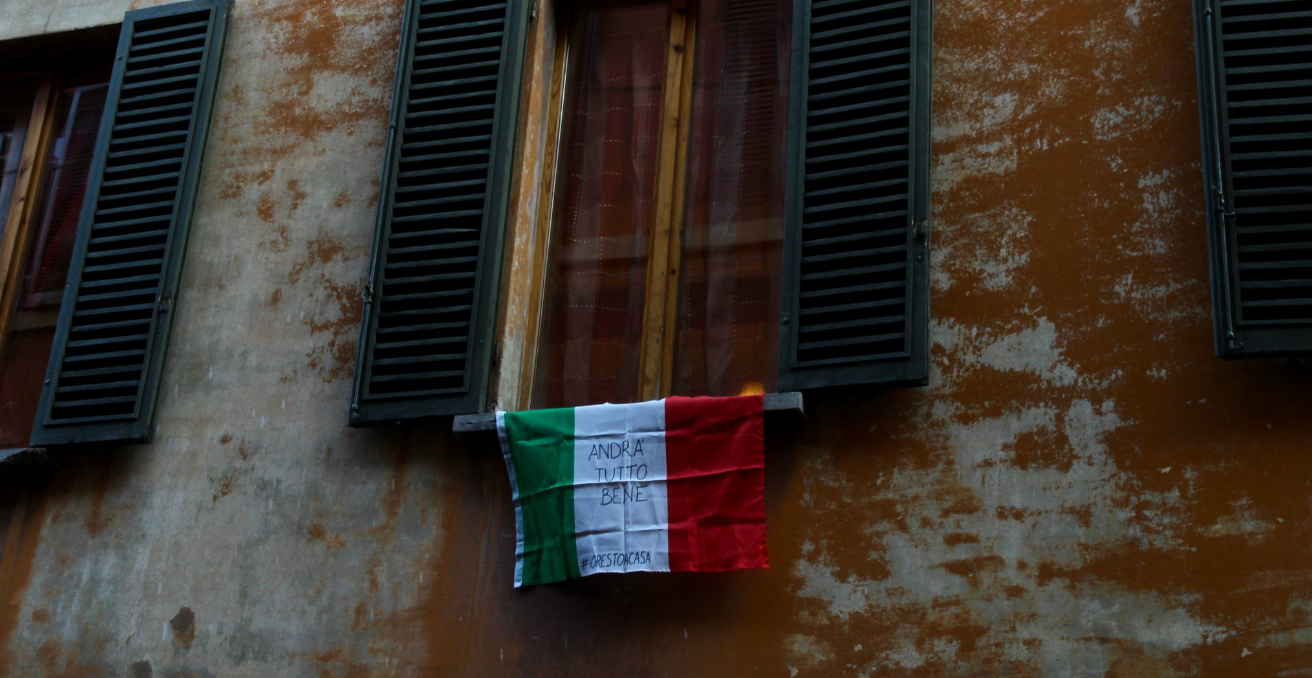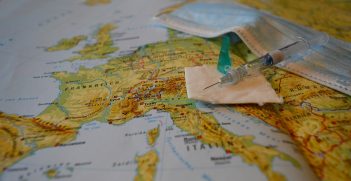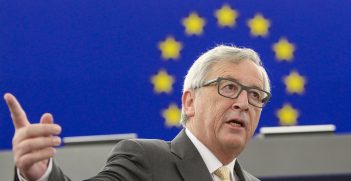How the European Union is Responding to the COVID-19 Crisis

A pandemic is the kind of crisis that is at once typically national, yet also poses a challenge at the EU level. The institutional nature of the EU leaves it better equipped to handle the financial challenges of the pandemic than the public health challenges.
As the number of cases of people who have contracted the Coronavirus continues to rise, the world has begun to wonder if the European Union (EU) is able to cope with this crisis. With the tally currently at half a million, the epicentre of the “viral tsunami” – that only two months ago was in Wuhan, China – is the European continent. This pandemic poses an enormous challenge for the EU to live up to its mantra of “unity in diversity.”
The EU has always done well in times of crisis, even if, ironically, it is first heavily criticised for doing “too little, too late.” The EU is being criticised, once again, for its response to the COVID-19 crisis. Member states have adopted very different responses and different explanations of those responses. Health and prosperity vary immensely across member states. Borders are closed. Early on, there was very little evidence of solidarity among EU member states. The EU is not a player. Instead China, of all countries, was offering equipment and necessary medical supplies, seeking to draw attention to its support, upending other member states for not sending equipment to the area that was most in need.
The criticism sounds familiar. But is it a fair criticism?
Some journalists have made the point that as the EU member states face the worst biologically-induced financial and economic crisis of a lifetime, the EU should be expected to help suffering countries like Italy and Spain. They criticise the EU for not having come to the rescue when the Italians were lacking essential goods such as face masks, hospital beds, ventilators, test kits, and emergency care units. Critics point out that the EU cannot respond quickly to an emerging crisis due to a lack of budget. It is also difficult in the EU context to identify whose role it is to take action and what kind of action it would be.
For most of these criticisms, it is understandable where they are coming from; yet the EU should now rise to the occasion and step in. How easy is it for the EU to play its part?
Let us first follow the money. The budget of the EU for everything it does is around €166 billion, which represents about one percent of the Gross Domestic Product (GDP) of the entire EU. To compare, the package agreed to by the United States Congress on 25 March amounts to two trillion US dollars, or ten percent of US GDP. This is thirteen times the entire EU budget. The reality in the EU is that taxing and spending is done by member states, not by the EU.
The EU is not a federal state. Some activities are done at the EU level and some policy areas are the responsibility of the EU, but many competences remain with member states. Health policy is still a national affair.
There are, of course, areas in which the EU has a considerable role to play, such as the management of the euro and the coordination of fiscal policy expenditures. In this policy area, the EU has already (albeit with some hiccups and a short delay) made the contributions that one might expect. European Central Bank (ECB) President Christine Lagarde announced on 19 March that the ECB would make available a package worth €750 billion to provide relief. European Commission President Ursula von der Leyen announced on the same day the creation of the first ever “rescEU stockpile of medical equipment” (financing 90 percent of it); and shortly after the EU activated the “general escape clause” of the Stability and Growth Pact, which provides member states with temporary suspension of the fiscal rules on budgetary deficits and fiscal debt ceilings.
In the EU there is a need to practice better trans border cooperation to deal with communicable diseases. Although the EU’s Early Warning and Response System, which dates back to 1998, was invoked, Italian authorities acted slowly. When the COVID-19 virus popped up in Northern Italy in February, the area was poorly prepared for what would transpire. The first patient did not get the attention needed because local medics did not realise what was going on. In fact, they were worried they could not find “patient zero.” A considerable number of people returned from Northern Italy to their homes in the rest of the Europe and brought along the virus. There was very little attention given to the impact of the spread of the virus to other areas. For those who returned to their homes elsewhere in Europe, local health authorities were as insufficiently on the lookout for the virus as they had been in Northern Italy.
The measures now being taken seem to have been coordinated in a number of ways. The European Centre for Disease Prevention and Control plays an important role in collecting, analysing, and disseminating information, which national authorities use. The European Union Integrated Political Crisis Response (IPCR) arrangements have been activated. These are crisis management mechanisms that were created when the EU was facing previous crises in times gone by. The IPCR plays a role in coordinating political crisis management at the level of the Council of the EU, which coordinates national authorities within the EU setting. At the end of January, the EU Civil Protection Mechanism, created in 2001, was activated to ensure that EU citizens can be repatriated. In early February, EU citizens of different nationalities were repatriated from Wuhan, China to Europe.
But many feel the EU is coming up short. Although the authorities of the EU member states have been in constant contact with one another to learn about best practices, they have not settled on a common response. To some extent, this might be logical, since the actual outbreaks in member states have been quite localised. Yet some authorities have responded slower than they could have. One cannot escape the feeling that they could have digested the experiences from other constituencies a little faster, or that the EU could have had a firmer hand in the coordination early on. Another challenge is where the voice of authority comes from. In times of crisis, citizens in the EU are keener to hear announcements from the authorities they identify with most – that is, national or in some cases, subnational or regional authorities – rather than EU-level authorities. Thus, any European response is probably best oriented towards the matters that the EU can deal with better than those that member states may decide on in isolation.
Finally, there is now a debate about whether technology should be used to monitor citizens of Europe to identify hotspots of COVID-19 outbreaks or detect when too many people are too close together. Some of these ideas are inspired by measures adopted in Wuhan and by the desire to target explicitly where the outbreak is the worst. These measures are a double-edged sword, however, and civil liberties advocates have already sounded the alarm. Such measures could offer relief and provide authorities with another tool to deal with the crisis. At the same time, any such measure, taken in a crisis, is often difficult to undo once the situation normalises again.
For now, the EU is hanging in there. But the worst has yet to come. If anything, this crisis makes painfully clear that a transboundary crisis requires a transboundary response. The EU could play a key role, but that has not happened so far.
Professor Amy Verdun teaches European politics and political economy at the Institute of Political Science at Leiden University and is on leave from the Department of Political Science at the University of Victoria, in British Columbia, Canada.
This article is published under a Creative Commons Licence and may be republished with attribution.





